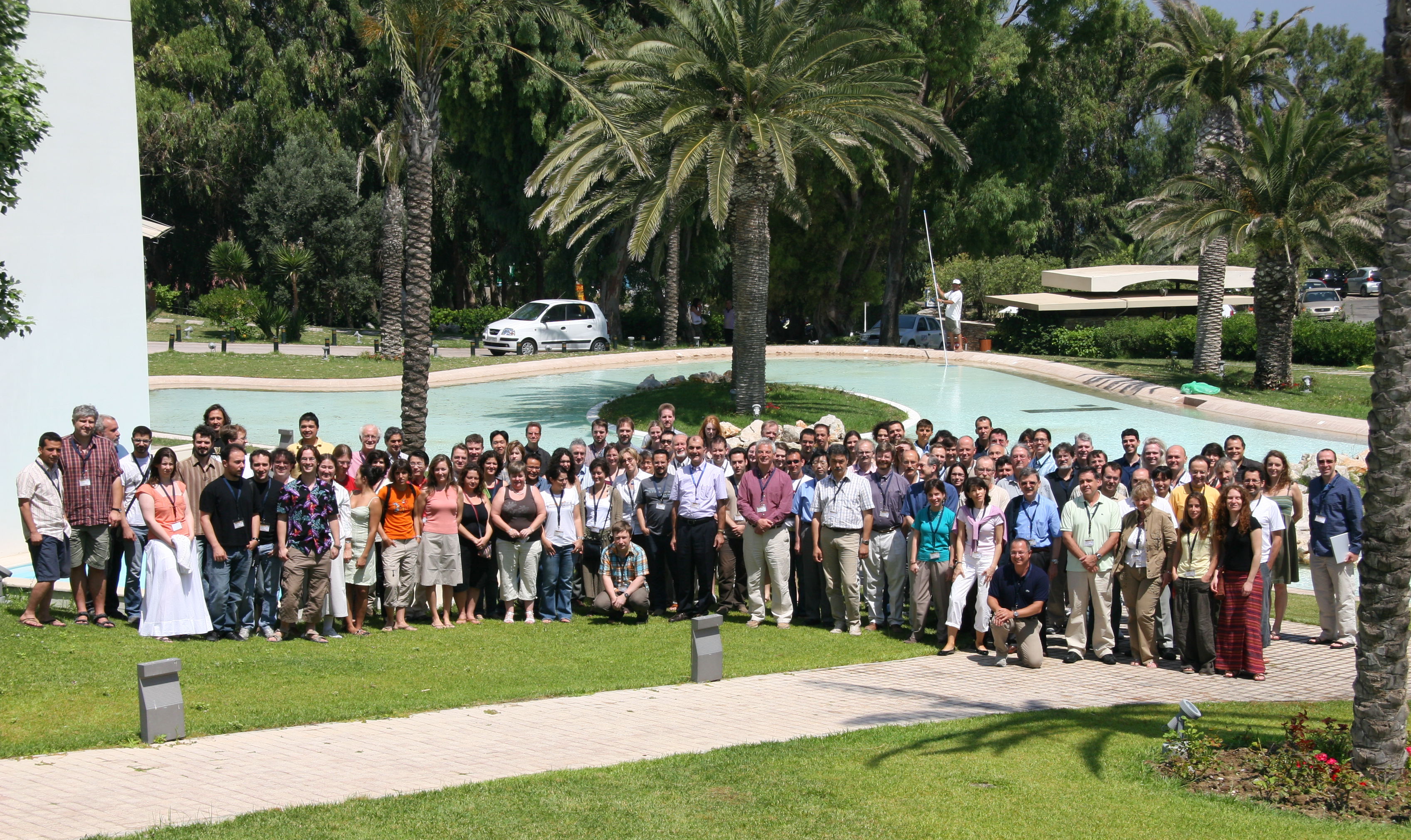Scientific Subject
A conceptual revolution in astronomy has been the prediction
that an extremely hot solar corona cannot be confined by solar gravity, but
expands supersonically into interplanetary space to fill the whole solar
system.
Modern observations including those recently with the Hubble Space
Telescope, have revealed that the Universe is replete with analoguous
outflows from all kinds of objects, ranging from the rich varieties of stars
to the galaxies.
The magnetohydrodynamic (MHD) approach originally used by E.N. Parker
to describe such cosmical phenomena, is increasingly used in several
other key problems of solar and astrophysical plasmas.
Examples are the magnetic field generation in rotating objects,
plasma heating and dynamic structures in the atmospheres of the various stars,
the acceleration of solar/stellar winds,
the dynamics of the interstellar medium,
collimated outflows from young stellar objects and accretion disks,
jets associated with enigmatic binaries and symbiotic stars,
relativistic flows associated with superluminal microquasars in our own galaxy,
astrophysical jets from nearby galaxies, or far away active galactic nuclei
and quasars probably fueled by supermassive black holes.
However, although the underlying similarities in the physics of these
phenomena are rather striking, nevertheless quite often researchers in one
field are unaware of the methods employed in the study of the other.
In solar plasmas, the generation, storage and eruption of
magnetic fields in our
Sun deep in its convective layers, can be seen as a prototype
of the fields of other stars, galaxies and accretion disks.
The erupted through the photosphere magnetic field forms intense flux
tubes and sunspots with siphon flows, various MHD waves and turbulence.
The impressive high resolution pictures of the Sun in various parts
of the e-m spectrum from the ground and via satellites
(Yokhoh, TRACE, SoHO, etc) show such an atmosphere constituted of many
steady and transient magnetic loops with clear evidence of intense heating
due to magnetic reconnection, anticipated by the spontaneous formation of
electric current sheets.
A similar picture emerges from numerical simulations of solar and
astrophysical plasmas, such as magnetic loops, flares, solar X-ray jets,
the nonlinear evolution of the Parker instability and magnetically
accelerated astrophysical jets.
Recent data from the south and north solar polar pass of the
Ulysses spacecraft present evidence that the solar wind is indeed
a meridionally anisotropic outflow, perhaps similar to
winds from solar- as well as non solar-type stars.
In cosmical plasmas,
the recent Hubble Space Telescope observations of
galactic and extragalactic jets show explicitly their association with
accretion disks and intricate structure while jets associated with
symbiotic stars and observed superluminal outflows in the Milky Way have
similar properties.
A theoretical understanding of such observations can be provided by
the work of our group, such as, theorems on the general tendency
of rotating magnetized
outflows to focus towards the system axis, self-similar
analytical models of MHD flows exhibiting novel physical
properties of the MHD equations, useful in modelling MHD flows,
physical properties in accretion disks with embedded magnetic
fields, studies of relativistic MHD outflows, theoretical analysis
and observations
of jets from young stellar objects, various types of AGN and Blazars,
Gamma ray bursts, etc.
The group organised in Crete on June 1995 an Advanced
Study Institute on ``Solar and Astrophysical Magnetohydrodynamic
Flows". In this Institute reknown plasma astrophysicists presented
review lectures to about 130 participants from 25 countries and the
volume, dedicated to E.N. Parker on the occassion of his retirement
from the University of Chicago, has been published by Kluwer Academic
Publishers.
The group also organised in Athens on October 2006 the 2nd Solar Orbiter
Workshop which played a decisive role in the vitalization of the Solar
Orbiter mission at ESA. The workshop was organized around sessions addressing
the following objectives and the instrumental approaches and observational
strategies to achieve them : (a) Determine the properties, dynamics and
interactions of plasma, fields and particles in the near-Sun heliosphere;
(b) Investigate the links between the solar surface, corona and inner heliosphere;
(c) Explore, at all latitudes, the energetics, dynamics and fine-scale structure of the Sunís magnetized atmosphere;
(d) Probe the solar dynamo by observing the Sunís high-latitude field, flows and seismic waves.
More than 120 solar/heliospheric scientists participated including ESA executives,
and teh ESA Science Director D. Southwood.
The group also organised the international astrophysics conference
Protostellar Jets in Context, in the framework of the JETSET European Research and
Training Network (RTN) (www.jetsets.org). The conference took place from July 7-11,
2008 inclusive in the beautiful island of Rhodes, Greece and more than 180
participants appeared. It reviewed the recent
contributions of theoretical and computational modelling, high-resolution
observations and laboratory experiments to our understanding of jets and
outflows from young stars. The connection with accretion disks and the
similarities with outflow phenomena in other astrophysical contexts was also explored.
The proceedings of the conference have been published by Springer.
Finally, in September 2009 we organised in Athens the 9th astronomical conference of the Hellenic
Astronomical Society.


Go back to main page

